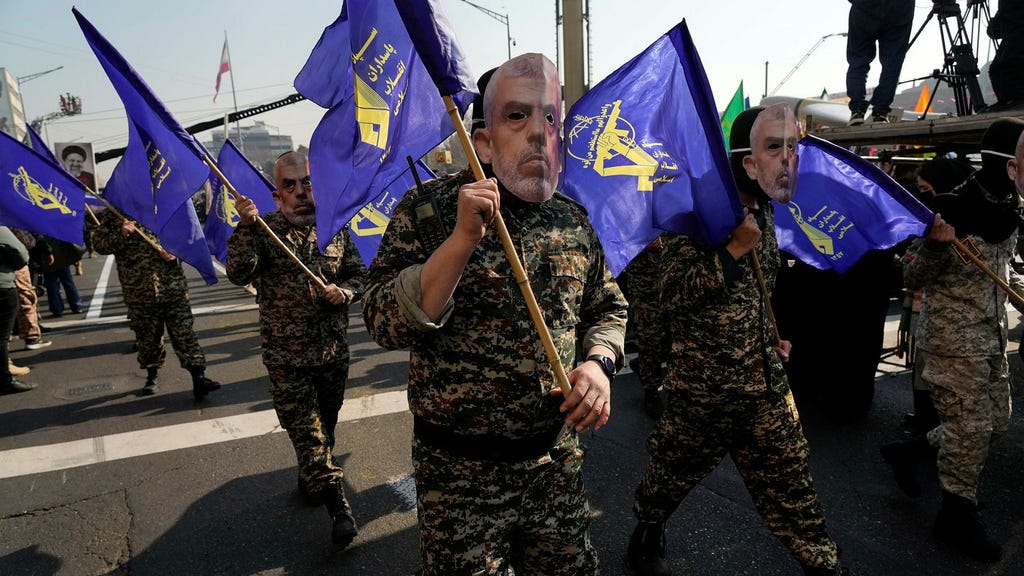The devastating conflict between Israel and Hamas, spanning over 15 months, has inflicted immense suffering upon the Gaza Strip, leaving a trail of destruction and fueling a cycle of violence. While Israel has claimed significant victories in weakening the Islamist militant group, the reality on the ground paints a different picture. Despite the heavy losses suffered by Hamas, including the death of key leader Yahya Sinwar last fall, the organization is experiencing a resurgence, driven by a new generation of recruits fueled by anger, a desire for revenge, and the readily available remnants of war. Under the leadership of Yahya Sinwar’s younger brother, Mohammed Sinwar, known as ”The Shadow,” Hamas is rapidly rebuilding its ranks and adapting its tactics, posing a persistent and evolving threat to Israel.
The vacuum left by Yahya Sinwar’s death has been effectively filled by his brother, Mohammed. Maintaining a lower profile throughout his career within Hamas, Mohammed Sinwar has emerged from the shadows to take the reins of the organization. Described as being in his 50s and having close ties to both his brother and the former military leader Mohammed Deif, Sinwar has quickly established himself as a crucial figure in Hamas’s evolving strategy. This strategy, as highlighted by Hugh Lovatt of the European Council on Foreign Relations, focuses on guerrilla warfare. Hamas fighters strategically ”hibernate” during Israeli offensives, only to swiftly regain control of territory once the Israeli Defense Forces withdraw, demonstrating a resilience that has frustrated Israeli efforts to quell the militant group.
The Israeli government has reported killing approximately 17,000 Hamas members and arresting thousands more. This figure, however, should be interpreted with caution, as Israel’s definition of ”member” is broad, encompassing virtually anyone involved in the Hamas-led administration of Gaza. Hamas itself places its losses at between 6,000 and 7,000 members, counting casualties from both its military and civilian wings. Regardless of the precise figures, the human cost of the conflict has been staggering, and the devastation wrought upon Gaza has created fertile ground for Hamas recruitment. The relentless Israeli bombardments, which have reduced much of Gaza to rubble, have inadvertently fueled a surge in new recruits eager to join the fight against Israel.
The resurgence of Hamas under Mohammed Sinwar’s leadership is characterized by a remarkable pace of recruitment. In recent months, thousands of new fighters have joined the ranks, driven by the widespread destruction and loss of life in Gaza. Yoni Ben Menachem, an Israeli researcher, estimated that approximately 4,000 men joined Hamas in just the past month, a testament to the organization’s enduring appeal among a population grappling with the aftermath of war. This influx of new recruits, combined with the readily available supply of unexploded Israeli ordnance that can be repurposed into improvised bombs, has enabled Hamas to rapidly rebuild its fighting capacity. The availability of these materials contributes to a dangerous cycle, where the remnants of war fuel further conflict.
Mohammed Sinwar’s influence within Hamas extends beyond recruitment. Reports indicate that he has adopted a firm stance in ceasefire negotiations, demonstrating his growing authority within the organization. According to sources cited by The Wall Street Journal, Sinwar recently communicated to Hamas representatives involved in the truce talks, asserting Hamas’s strong position to dictate the terms of any agreement. This confident posture underscores Hamas’s belief in its ability to withstand Israeli military pressure and negotiate from a position of strength. This resilience, coupled with the group’s ability to replenish its ranks, presents a significant challenge to Israeli efforts to achieve a lasting peace.
The ongoing conflict has exposed a concerning dynamic: Hamas is rebuilding its forces at a rate that surpasses Israel’s capacity to eliminate them, according to Amir Avivi, a retired Israeli brigadier general. This assessment highlights the challenges facing Israel in its efforts to dismantle Hamas. The combination of rapid recruitment, a strategically adaptable approach to warfare, and the leadership of Mohammed Sinwar has enabled Hamas to weather the storm of the Israeli offensive and emerge as a persistent force in the region. The ongoing cycle of violence and retaliation underscores the urgent need for a sustainable solution that addresses the root causes of the conflict and offers a path towards a more peaceful future. The situation in Gaza remains volatile and the resurgence of Hamas under Mohammed Sinwar presents a complex and potentially destabilizing challenge to the region.














